Have you ever wondered where the Indian Club SNAKES movement originated?
To my mind, the link between Indian Club Snakes and Daggers originated from close quarter combat, where for example you may have lost your sword and become engaged in a grappling life or death fight with your opponent, and your dagger is the last weapon you have to hand.
Indian Club Snakes
Indian Club Snake movements are considered the most difficult club movements and form the basis of much of the fancy work. These movements get their name on account of their resemblance to a snake winding around the arm.
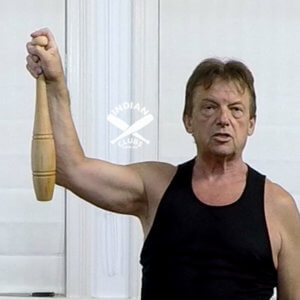 Snake Grip |
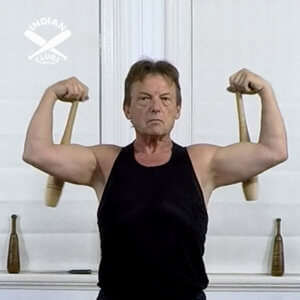 Snake Throw Off |
Snake Grips
Snakes are all executed with a special grip, which is held throughout the entire snake movement and only released at the throw off, the wrist during the greater part of the work.
There are various snake grips, but the one which is most commonly used has the forefinger placed over the pommel, with the other three fingers grasping the handle, the end of the thumb is placed on the pommel and the ball of the thumb is pressed against the handle.
Another form of the snake grip used is to hold the club with the thumb and forefinger on the handle so that the club is held with the forefinger and thumb around the handle, and the pommel is on the outside of the ring created by the thumb and forefinger.
The Dagger
A dagger is a fighting weapon, a two-sided blade with a very sharp point used for thrusting, stabbing and penetration of protective armour. Most daggers have a full crossguard to keep the hand from sliding down onto the sharp blade and guarding against the onslaught of your opponent.
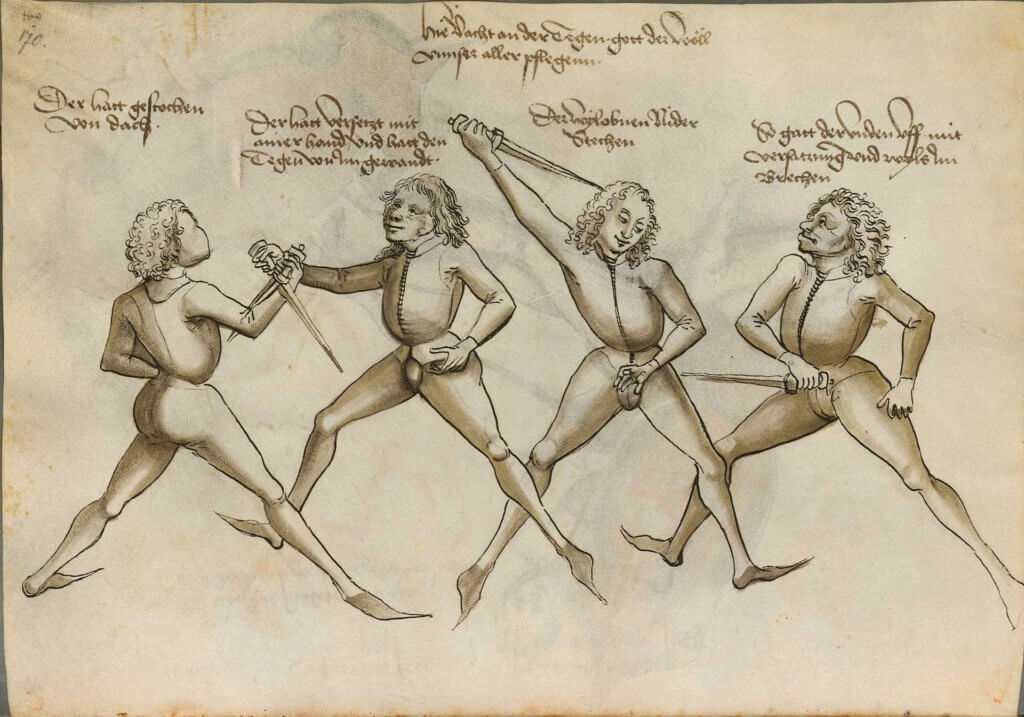
Ice Pick Grip Variations. De_Fechtbuch_Talhoffer_169. Published 1459
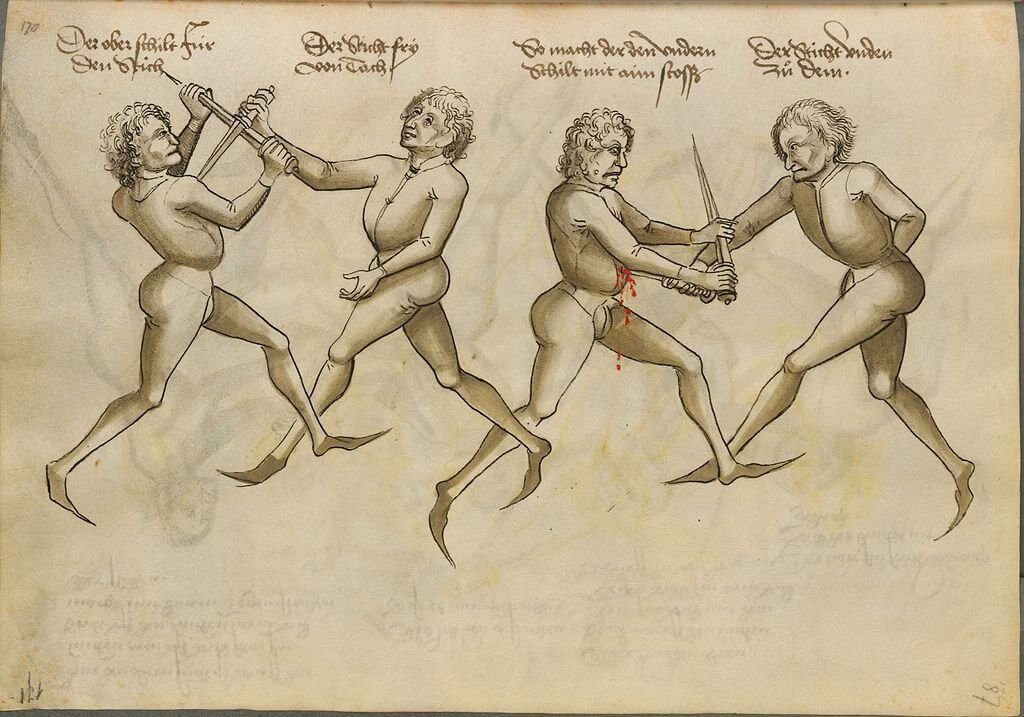
Left Ice Pick Grip attack, right Sabre Grip attack. De_Fechtbuch_Talhoffer_170. Published 1459
There are two ways you can hold a Dagger
Sabre Grip
Sabre Grip, where the dagger points upwards and has a long reach that allows you to cut and thrust.
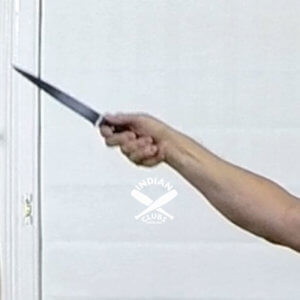 |
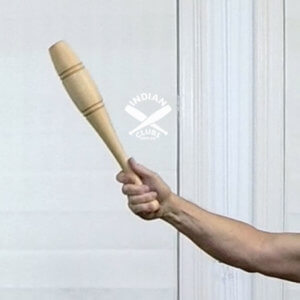 |
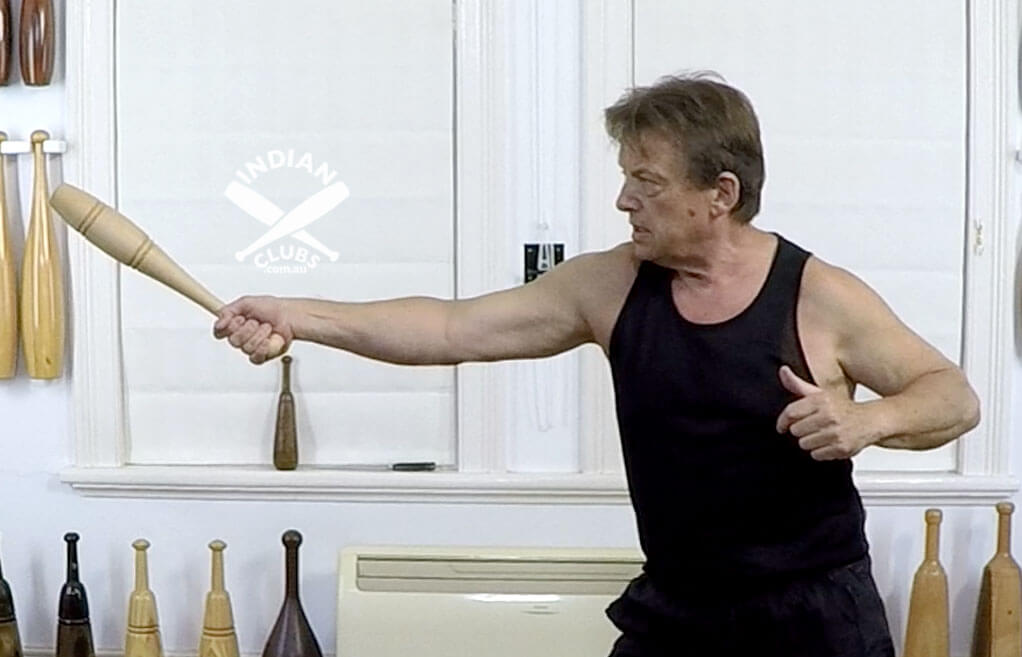
Sabre Grip has a longer reach to cut and thrust.
Ice Pick Grip
Ice Pick Grip has the dagger pointing down, it has a shorter reach than the sabre grip but has a lot more striking power. Plus the ice pick grip also can act defensively if the blade is laid down the back of the forearm to ward off a strike from your opponent, and also it can act as a hook by catching and deflecting an attacking weapon. A versatile grip.
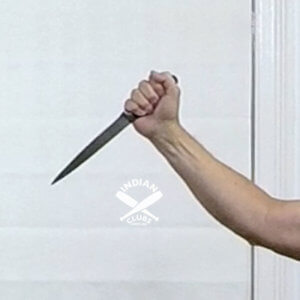 |
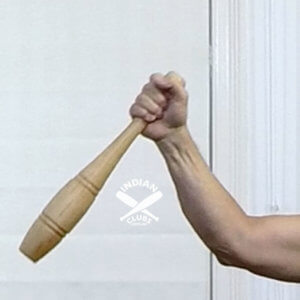 |
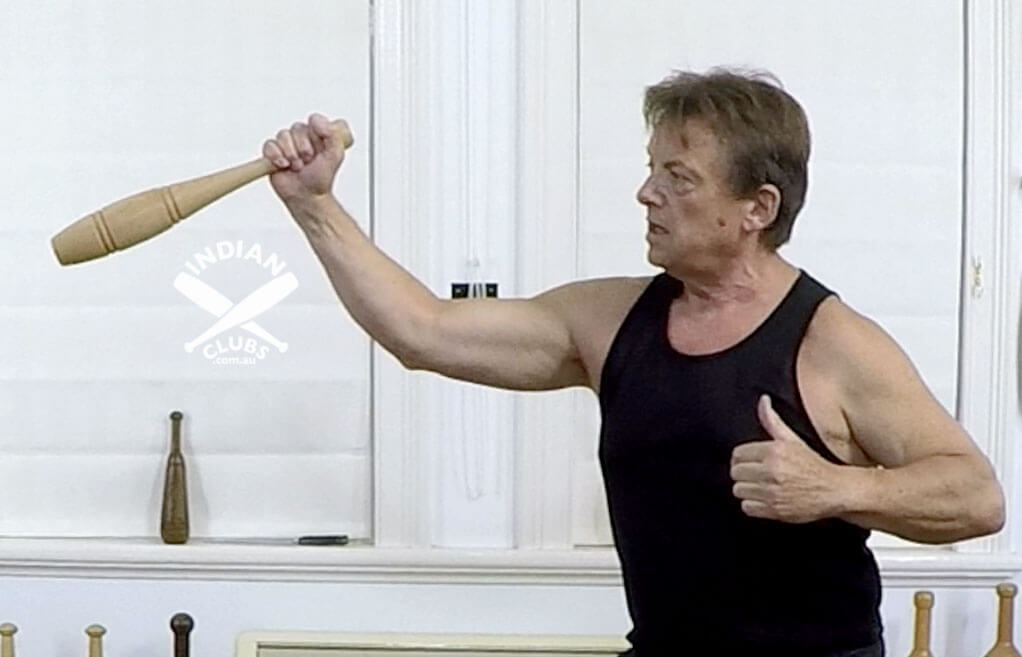
Ice Pick Grip has a shorter reach but more striking power.
Defensive Position
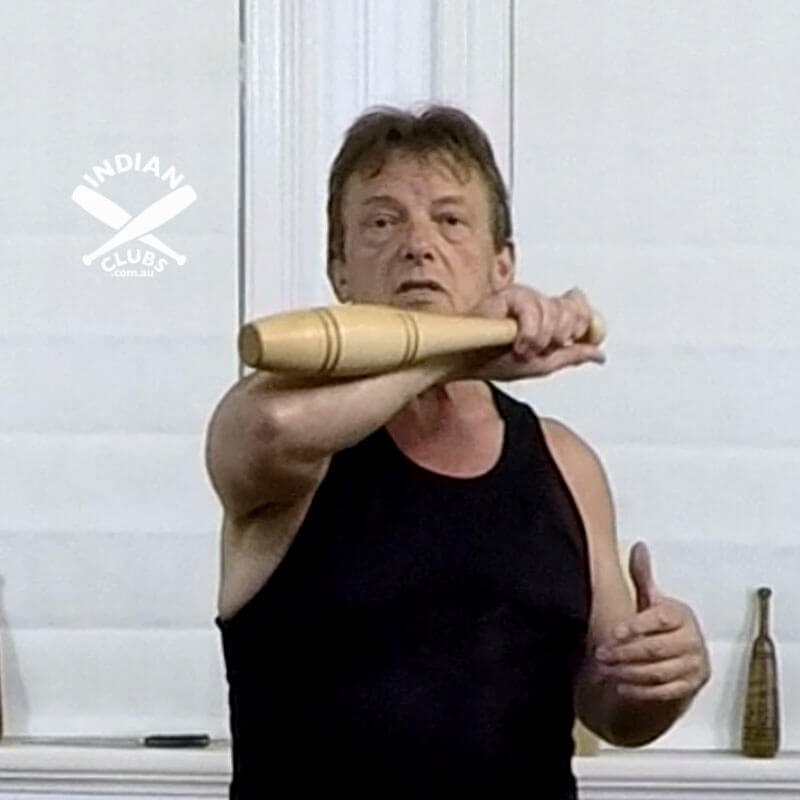
To defend you can lay the dagger/club to the back of your forearm and protect from a strike.
Both Grips have Advantages and Disadvantages
It would seem logical to take advantage of both the Sabre Grip and the Ice Pick Grip during a fight as both have advantages and disadvantages.
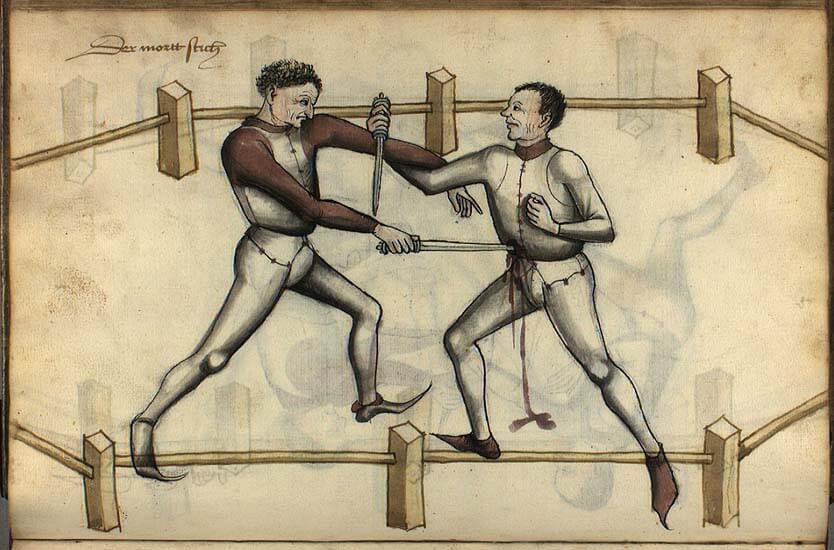
The fighter on the left using the Sabre Grip and the fighter on the right using the Ice Pick Grip
Change your Grip and the Direction of the Blade
A manoeuvre like the Indian Club Snake movement and its variations can change the direction of a dagger blade very quickly and efficiently.
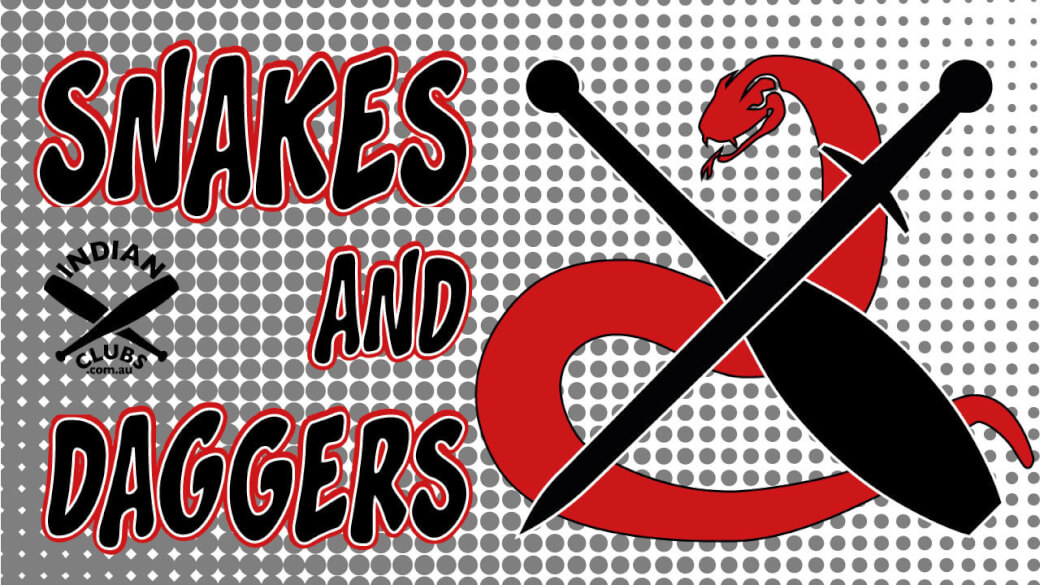
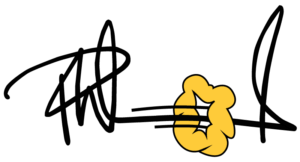
I agree. I’ve been training this and that from the martial world forever and HEMA (historical European martial arts, a too wide description but still..) for 9 years and been swinging clubs a little less. The similar mechanics or applications became evident quite soon. I feel there is technical elements or at least anatomical competence in relation to swordplay hidden in club swinging. This is of course evident with lighter, 1900’s clubs, but more eluding in heavier clubs that scream of wrestling ancestry. Meel, mace and heavier, older tools relate to heavy swords and their use quite well. Still, thinking of zurkhaneh there must be a relationship to overall martial prowess. I found snakes just recently and was intrigued and baffled. Honestly, I didn’t think of daggers until now. The fluidity resembles eskrima (filipino martial art) and even more so some newer (200 years) italian dagger duelling where I’ve seen similar kind of “flips” to turn the grip. I wonder if those techniques could work in grappling range where most older (as that Talhoffer manual) styles with dagger happen. This requires testing 🙂 In those days the length of the dagger was usually to ones own elbow which, to my testing, seems optimal to this move. One thing that came to mind was “flourish” which means a pre-duel sequence with the sword that shows skill and intimidates the opponent. And wows the spectators. Returning to italian dagger duelling and references to snakes; only one I know of is in a modern circus-style manual. There might be some correlation between illegal elements of society 200 years ago and travelling shows? What is the earliest reference to snakes? Interesting subject as it opens up the whole “drill->do” mindset akin to katas in karate. Greetings: Antti
Hi Antti, Thanks for your comments and feedback.
Regarding Persian Meels and Zurkhaneh, have you seen this post where I look into possible origins? https://www.indianclubs.com.au/4166/8-important-tips-about-persian-meels/
In regards to your question about the earliest references to Snakes, Club Swinging by W. J. Szatz has a comprehensive explanation of how to do them, but nothing about the origins. I created the Snakes and Ladders post hoping to attract some more information, like your comments. Hopefully, more information will turn up as time goes on. Best Regards. Paul
Hi Paul, Going in circles to post a link to an image for you! I will try facebook!
Hi Dave, Best to send me an email to paul@indianclubs.com.au